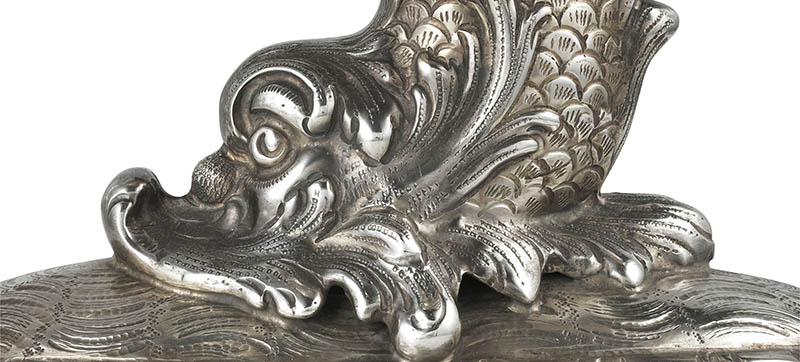They were most probably made to be salt cellars, placed at the centre of the table as its most important object. Nefs, in use from late Medieval times, were made in silver and sometimes in gold in order to highlight and draw attention to the host’s wealth. A Nef was in the shape of a floating vessel or caracca, a three or four-mast sailing ship that had been developed in the Fifteenth century by the Genoese for commercial purposes. They were used to contain the cutlery, the knapkin, the salt cellar and the glass of the master of the house. As if it were the family ship, it was more often than not given a name. A Nef that had belonged to the Duke of Orleans was named the “Porquepy” which meant “porcupine”. The Burghley Nef at the Victoria & Albert Museum in London is by Pierre le Flamad and was made in Paris between 1482 and 1483.
In the Sixteenth century they were merely table ornaments, especially in Germany and Switzerland, but by the Nineteenth century there was a whole host of models of ships in all sizes and decorations, all undertaken by the master silversmiths from around Nuremburg and Hanau. They were magnificently embossed and enriched with marine and military features, often on two wheels so that they could be moved up and down the table, or sitting upon pedestals in the form of Neptune or mermaids.
A silver flagship to make voyages in the seas of our imagination thus makes an appearance in our Auction House as an imposing centre-piece in the shape of a Nef sailing ship in German silver, from the beginnings of the Twentieth century (115 centimetres high and 90 centimetres long, 7,080 grammes in weight). The oval base with four turtle’s feet supports a two-handled trunk in the form of two dolphins and the three masts sporting open sails. The keel is decorated with scenes from the tales of Neptune.

Grande centrotavola a forma di veliero “Nef” in argento
Germania, inizi del XX secolo
Stima € 18.000 – 22.000

